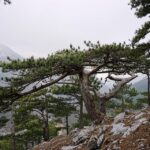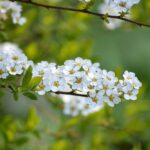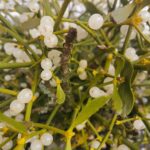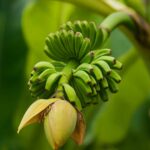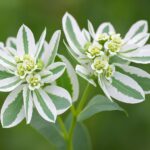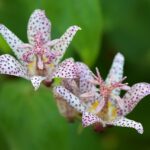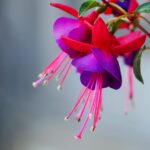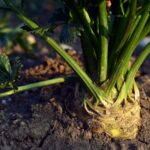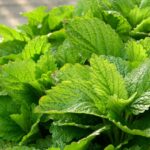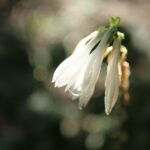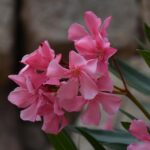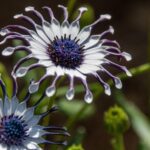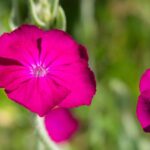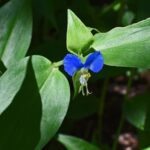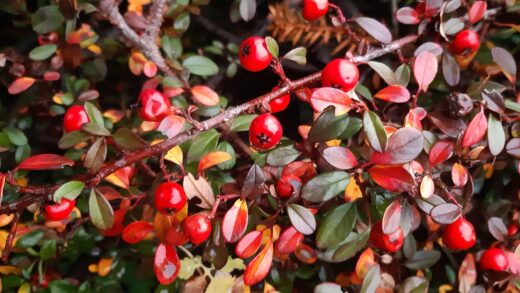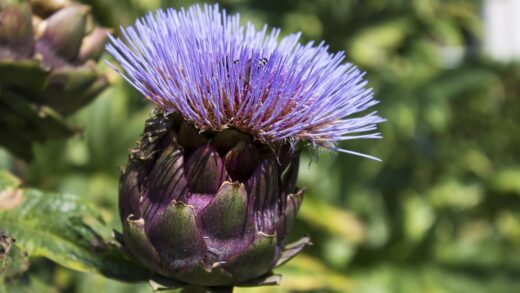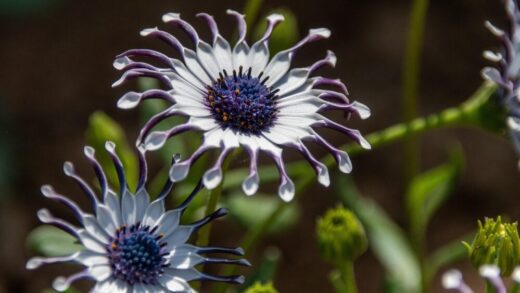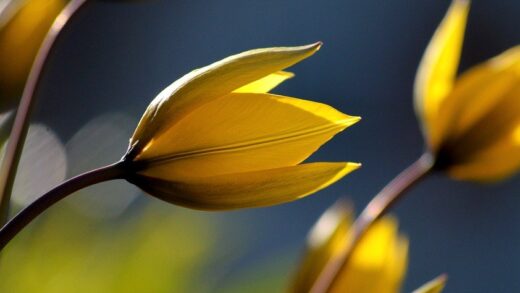The Kousa dogwood (Cornus kousa) is an increasingly popular ornamental tree in gardens, which is no surprise given its spectacular blossoms, edible fruit, and beautiful autumn foliage provide an unparalleled aesthetic experience. Generally, it is considered a resilient, relatively low-maintenance species that tolerates diseases much better than its American relative, the flowering dogwood (Cornus florida). However, like all living organisms, the Kousa dogwood is not invulnerable; under the right conditions or when weakened, it can also be attacked by various pathogens and pests. The key to successful plant protection lies in prevention and the early detection of problems, so every owner should be aware of the potential threats.
Fungal diseases and their prevention
In the case of the Kousa dogwood, fungal infections most commonly affect the foliage, and less frequently, the woody parts and the root system. Powdery mildew is one of the most common, yet fortunately less dangerous, problems, indicated by a characteristic white, powdery coating on the surface of the leaves, primarily in the second half of summer. This disease mainly develops in humid, warm weather in locations with poor air circulation, and although it rarely causes serious damage, a severe infection can inhibit photosynthesis and mar the plant’s appearance. For prevention, it is important to ensure proper spacing and occasionally thin out a dense canopy to improve airflow. Collecting and destroying fallen, infected foliage also reduces the chance of infection the following year.
Many people fear the disease known as anthracnose, which is one of the most destructive pathogens of the flowering dogwood; however, the good news is that the Kousa dogwood is highly resistant to it. This does not mean that spots will never appear on its leaves; various, less aggressive fungi (such as Septoria, Colletotrichum species) can cause leaf spot diseases. These symptoms usually appear as small, dark spots, sometimes with a purple border, especially during rainy periods. These infections rarely pose a serious threat to the tree’s overall health, and control is usually limited to preventive measures, such as maintaining good condition and removing fallen leaves. Preserving the tree’s vitality is the best defense against such secondary pathogens.
Fungal diseases affecting the root system and the lower part of the trunk, such as root and trunk rot caused by Phytophthora, pose a much more serious threat, although they fortunately occur less frequently. These problems are almost invariably traced back to poorly drained, overly compact, airless soils where the roots are constantly sitting in water. The symptoms also manifest on the foliage: the leaves turn yellow, wilt, shoot growth ceases, and then branches die back. At the base of the trunk, the bark may become discolored, soften, and the tree can easily fall over. The most effective defense against these diseases is prevention: always plant Kousa dogwoods in well-draining soil and avoid overwatering.
Canker disease is also a potential threat, most commonly caused by fungi from the Botryosphaeria genus. These pathogens typically enter the plant’s tissues through some form of injury (such as a pruning cut, mechanical damage, or frost damage). At the site of infection, the bark becomes sunken and discolored, and the branch or even the trunk can die at this point, causing the entire branch to perish. Canker is particularly dangerous for stressed, weakened trees. The basis of control is to maintain the tree’s good condition, practice proper pruning, and avoid mechanical damage, especially wounds caused by lawnmowers and string trimmers around the trunk.
More articles on this topic
The most common animal pests
Among the animal pests of the Kousa dogwood, the dogwood borer (Synanthedon scitula) is perhaps the most significant, although its damage is not widespread. The source of the problem is not the moth, but its larva, which bores under the bark of the tree and feeds on the cambium and phloem layers. This activity interrupts the flow of sap, which can lead to the death of branches and, in severe cases, the entire canopy. Signs of infestation include small holes in the trunk or thicker branches from which sawdust-like frass is expelled, as well as wilting and dieback of the crown. The pest most often attacks damaged, stressed trees; trunk injuries from lawnmowers are a particularly ideal entry point for it.
Scale insects can also be frequent guests on the Kousa dogwood, especially if the tree is not in optimal condition. These sucking pests form a small, shield-like coating around themselves and sit motionless on branches, shoots, and sometimes leaves, while sucking the plant’s sap. Their damage results in yellowing leaves, slowed growth, and, in severe infestations, branch dieback. Scale insects also excrete honeydew, on which sooty mold grows, forming a black coating on leaves and branches, further reducing the photosynthetic surface. The basis of control is early detection and removal of infected branch parts, and in more severe cases, dormant or spring oil sprays can be effective.
Aphids and spider mites also belong to the group of sucking pests and primarily favor young, tender shoots and leaves. Aphids appear in colonies, distorting leaves and shoot tips, while also producing honeydew, attracting ants and promoting the development of sooty mold. Spider mites are tiny, spider-like creatures that live on the underside of leaves, and their feeding causes small, yellowish-white spots, or “stippling,” to appear on the leaf. They can multiply rapidly in dry, hot weather and form fine webbing on the leaves, leading to the weakening of the plant. Natural enemies (ladybugs, lacewings) can be effective against both pests, but if necessary, insecticidal soaps or horticultural oils can also be used for control.
Although less common, other insects can occasionally cause problems on the Kousa dogwood. These may include various cicada species, which cause damage to branches with their egg-laying, or the caterpillars of certain moth species that chew on the foliage. The Japanese beetle (Popillia japonica) may also favor it, although the Kousa dogwood is not among its primary host plants. It is important to emphasize that in a healthy, well-maintained garden with high biodiversity, the population of natural enemies usually keeps these secondary pests in check. Chemical control is recommended only as a last resort, targeted and with great care, to spare beneficial organisms.
More articles on this topic
Abiotic factors and stress effects
It often happens that the root of a Kousa dogwood’s health problems is not a pathogen or pest, but some environmental, so-called abiotic stress factor. These factors can not only directly harm the tree but also weaken it, opening the door for secondary infections. Water management is one of the most critical points; the Kousa dogwood prefers moist but well-drained soil. Prolonged drought leads to wilting, scorching, and premature leaf drop, while making the tree more susceptible to attacks by the dogwood borer. In contrast, overwatering or standing water causes root suffocation and the aforementioned root rot, which can lead to the tree’s death.
Soil quality and pH are also crucial for the tree’s health. The Kousa dogwood prefers neutral to slightly acidic (pH 5.5-6.5), organically rich soils. In overly alkaline soils, the plant cannot absorb certain essential micronutrients, especially iron, which leads to iron chlorosis. The symptom of this is the yellowing of the leaves between the veins, while the veins remain green. Compacted, airless soil inhibits healthy root development and the uptake of water and nutrients, and also contributes to the development of root diseases. Applying mulch and supplementing with organic matter can do much to improve soil life.
Among the stress factors resulting from human activity, improper planting and mechanical damage stand out. One of the most common mistakes is planting the tree too deep, which can lead to root collar rot and the development of girdling roots around the trunk, which eventually strangle the tree. Piling too much soil around the trunk has similar consequences. Bark injuries on the trunk caused by lawnmowers or string trimmers not only disfigure the tree but also create open wounds through which fungal pathogens and wood-boring insects, like the dogwood borer, can easily enter. For this reason, creating a protective zone around the trunk covered with mulch is essential.
Last but not least, extreme weather conditions can also take a toll on the Kousa dogwood. A sudden, late spring frost can damage newly emerged leaves and flower buds. During hot, dry summers, especially near south-facing, sunny walls or pavement, the leaves can get scorched, which manifests as browning and drying of the leaf margins. Although the Kousa dogwood prefers sunny locations, excessive heat and reflected heat can cause it stress. A well-chosen planting site, protected from extreme microclimates, and proper watering help the tree to survive these critical periods.
Integrated pest management in practice
Integrated Pest Management (IPM) is an approach that emphasizes prevention and uses chemical interventions only as a last, most necessary resort. For the Kousa dogwood, this strategy is particularly effective. The first and most important step is to choose the right growing site. Look for a location in the garden that is sunny or semi-shady, has good air circulation, but is protected from strong winds. The soil should be well-drained, rich in organic matter, and have a slightly acidic pH. A tree that grows in ideal conditions from the start will be much more resistant to diseases and pests.
Careful and professional care is the second pillar of prevention. This includes regular, but not excessive, watering, especially during dry periods, to avoid drought stress. Mulching the soil around the trunk with a 5-10 cm thick layer of organic mulch (e.g., pine bark, compost) helps to retain soil moisture, regulate its temperature, suppress weeds, and keep the lawnmower away from the trunk. Nutrient supplementation should always be based on the results of a soil test, avoiding excessive nitrogen application, which stimulates the growth of weak, disease-susceptible shoots. Regular observation of the tree is essential for detecting problems at an early stage.
Pruning can be an important tool for maintaining the tree’s health, but only when done professionally. The Kousa dogwood generally requires little pruning. The main purpose of the intervention should be to remove diseased, damaged, dead, or crossing branches. This not only shapes the tree but also improves the ventilation of the canopy, which reduces the chance of fungal diseases developing. Pruning should always be done at the end of the dormant period with sharp, disinfected tools. It is advisable to disinfect the pruning shears or saw after each cut, or at least between trees (e.g., with alcohol), to prevent the transmission of pathogens.
Chemical control should only be the last resort in an integrated pest management strategy. Many problems, such as a mild powdery mildew infection or a small aphid colony, do not justify spraying. If the level of damage still reaches the intervention threshold, always choose the selective product with the lowest environmental impact. For example, dormant oil sprays in spring against scale insects, potassium soap-based products against aphids, and copper or sulfur-based products against fungal diseases can be effective. Spraying should always be carried out according to the instructions, at the right time, and in a manner that is least harmful to bees.

